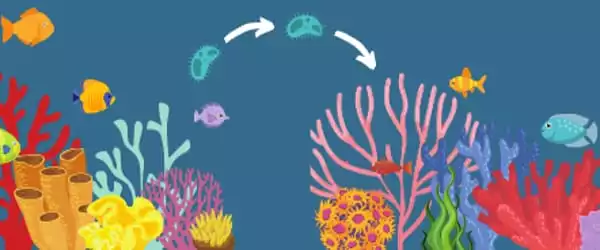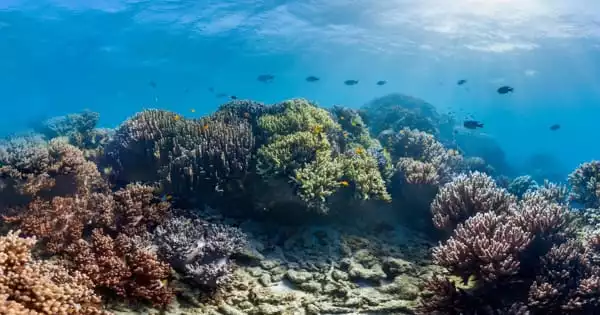A biologist advocates for enhancing corals’ natural adaptive capacity through nature-based approaches. Coral reefs are the rainforests of the seas, supporting 30% of all marine biodiversity. In terms of economics, they support the livelihoods of approximately a billion people worldwide. At the same time, climate change poses a serious threat to coral reef ecosystems.
Professor Christian Voolstra of the University of Konstanz, along with an international group of experts, describes how to extend and harvest natural adaptive processes to increase the resilience of corals in order to increase the resilience of the reef ecosystems they build in the current issue of the online journal Nature Reviews Earth & Environment. The researchers advocate for the use of nature-based approaches and the development of associated methods to increase corals’ natural heat resilience. In some ways, the goal is to provide a toolbox of methods for corals to help themselves.
The 1.5-degree climate warming target is not enough
Corals’ historically close adaptation to their surrounding climate is their Achilles heel in the face of climate change. Even limiting global temperature rise to 1.5 degrees Celsius is insufficient to save coral reefs. This is due to the fact that corals are so well adapted to their surroundings that even a slight increase in temperature can have a negative impact on them. This is most visible in coral bleaching, which is a symptom of a dysfunctional symbiosis between corals and their essential photosynthetic algae.
“We have to do something,” the study’s researchers insist emphatically. “We advocate for an approach based on the “nature does it best” philosophy. What solutions have corals developed to increase their stress tolerance, how are they studied, and how can they be used most effectively?” Describes Voolstra, Professor of Genetic Adaptation in Aquatic Systems at the University of Konstanz.
Because the same corals that bleached previously are used, restoring coral reefs by fragmenting corals to grow new colonies has not been very successful. As a result, it is only a matter of time before these corals bleach again during a subsequent heatwave and dies. As a result, the researchers are focusing on methods to improve the survival of restored coral.
Resistant and less resistant colonies
One possibility is to choose better source material. Not all corals exhibit the same degree of sensitivity. There are reefs, for example, that have extremely resistant corals that retain their properties when used as material for restoring colonies. Voolstra’s research group developed the rapid test CBASS (“Coral Bleaching Automated Stress System”) to determine the heat resistance of corals in order to identify such coral species. Voolstra recently used this test in the field in the Red Sea. “Even within the same reef, we observed a large natural variation of very resistant and very susceptible colonies,” says Voolstra.

Getting coral offspring used to harsher environmental conditions
Conditioning the corals to make them more resistant is another method for optimizing restoration. The “environmental hardening” method gradually exposes very young corals, or coral larvae, to harsher environmental conditions by applying a low level of stress. As previously demonstrated, these “primed” corals are better prepared to deal with real-world stressors. One area of study focuses on identifying the environmental conditions and locations where corals have already learned to live in more extreme conditions. Colonies near the coast, for example, are exposed to strong temperature fluctuations, as water in such locations is warmer during the day and colder at night. This makes the corals more resilient.
Furthermore, as corals live in symbiosis with their associated algae as so-called holobionts, this symbiosis can be used to increase the stress tolerance of the corals. For instance, there are also differences in the stress resistance among different algal species associated with corals. In their early development, the free-swimming coral larvae are usually not yet associated with the algae. This provides an opportunity to make only certain algae species available to corals when they are still larvae.
According to research, corals can more easily engage and associate with resistant algae at this stage. In fact, continuous heat stress may be required to maintain the symbiotic relationship with such robust and non-native algal species.
Microbiome transplantation from resistant to susceptible corals
Finally, it may be possible to transfer mutualistic bacteria from a resilient coral to a susceptible coral in order to improve heat tolerance. This can be accomplished by either transplanting the microbiome of healthier, stress-resistant corals onto susceptible corals or by administering a probiotic cocktail made up of a blend of cultured, beneficial bacteria extracted from particularly resistant colonies.
Researchers were able to show that using a probiotic treatment reduced the mortality of corals under acute heat stress by 40% in the long term in the study “Coral microbiome manipulation elicits metabolic and genetic restructuring to mitigate heat stress and evade mortality,” in which Voolstra also participated.
It is critical to note that, unlike genetic modifications, no artificial or foreign genetic material is used in this type of manipulation. “It is very difficult to predict the effects of foreign genetic material in complex ecosystems, particularly in microorganisms that have extremely short reproduction times and are thus able to spread and evolve quickly,” Voolstra said of genetic manipulation to save reefs.
The published review also emphasizes the importance of standardizing procedures in order to make them comparable and transparent in a second section. A global database with standardized experiments and outcomes is already in the works. The plan is to use artificial intelligence approaches to analyze such “big data” to determine the factors that are indicative of the type and degree of suggested interventions.
“Unfortunately, nature’s ability to heal itself has passed. After reaching climate neutrality, our goal is to ensure that enough coral survives to aid in the long-term recovery of reef ecosystems. It is up to our generation to identify the arsenal of nature-based adaptive approaches that are available and intervene as needed”, according to the marine biologist.





